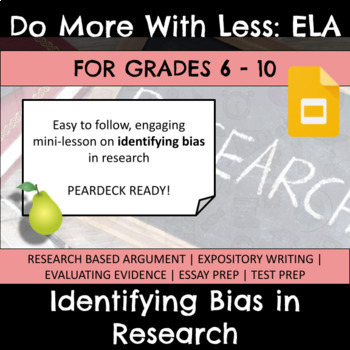Identifying Bias in Research Mini Lesson | Argument Writing | Reading Nonfiction
- Google Slides™

Description
This short Google Slide mini-lesson is dedicated to helping your students identify bias in their research as they work toward gathering evidence to write an argument based essay. This lesson works best if students know how to find reliable (if somewhat biased) information on the Internet.
The entire lesson is Peardeck ready, but if you don't have peardeck, you can easily convert it in Nearpod or just have students answer the ol' fashioned way!
It covers these three main sub-topics in regards to determining bias:
- Who wrote this?
- Why was this written?
- What tone & words are being used to persuade the reader?
Within the lesson are slides that ask students to do critical thinking work, including examples of personas in media that are used to represent bias in everyday topics like animal testing, healthcare, etc.
*******************************************************************
Editable products are still (c) to Do More With Less ELA. This product is for personal use only and cannot be resold in any way, shape, or form regardless of how it is edited.


